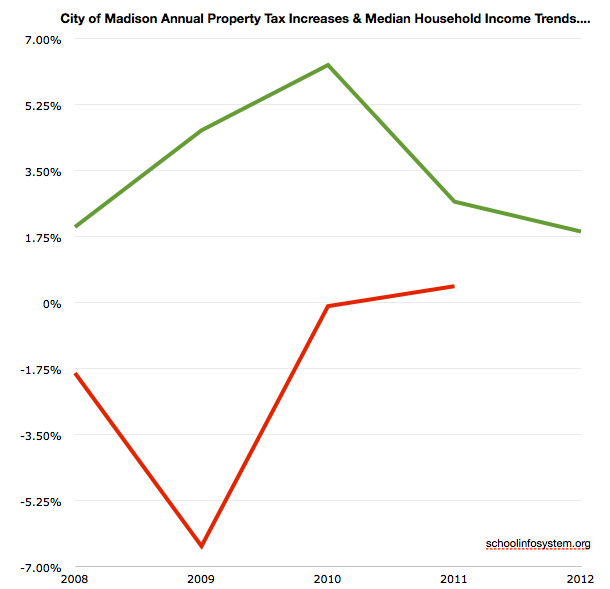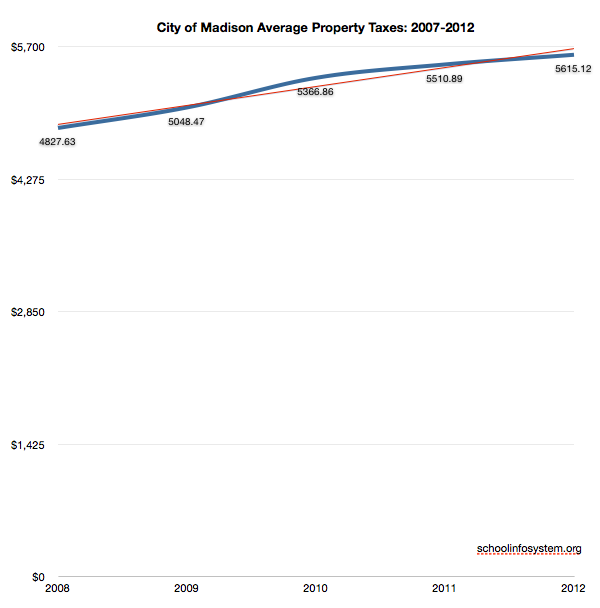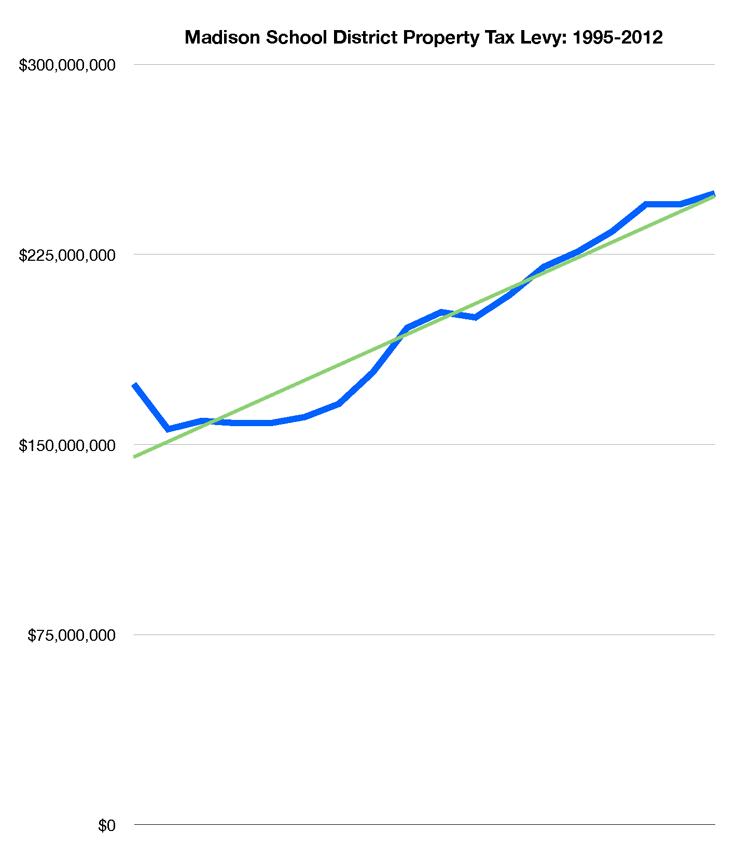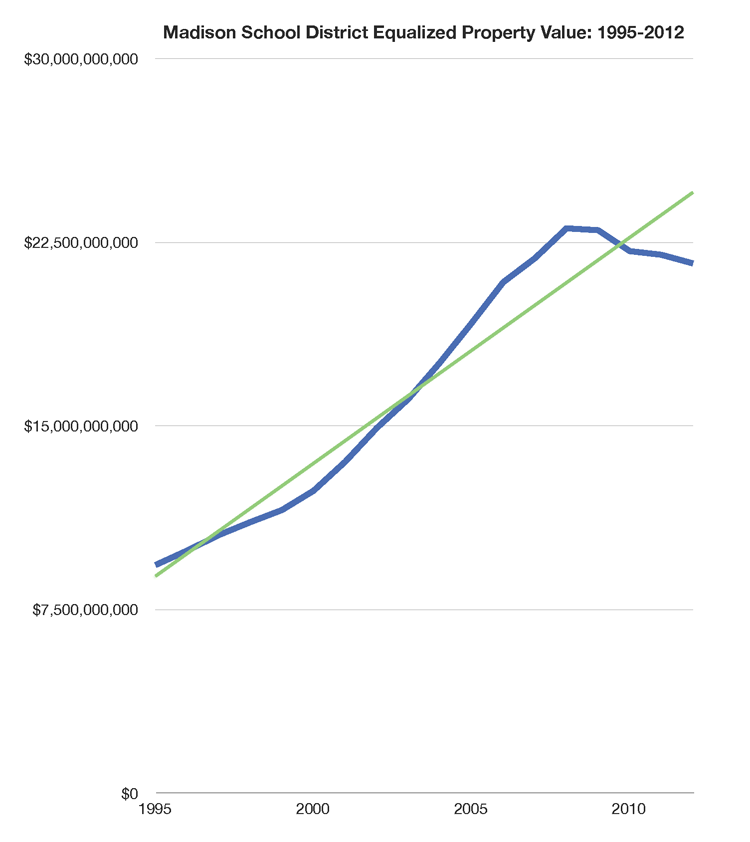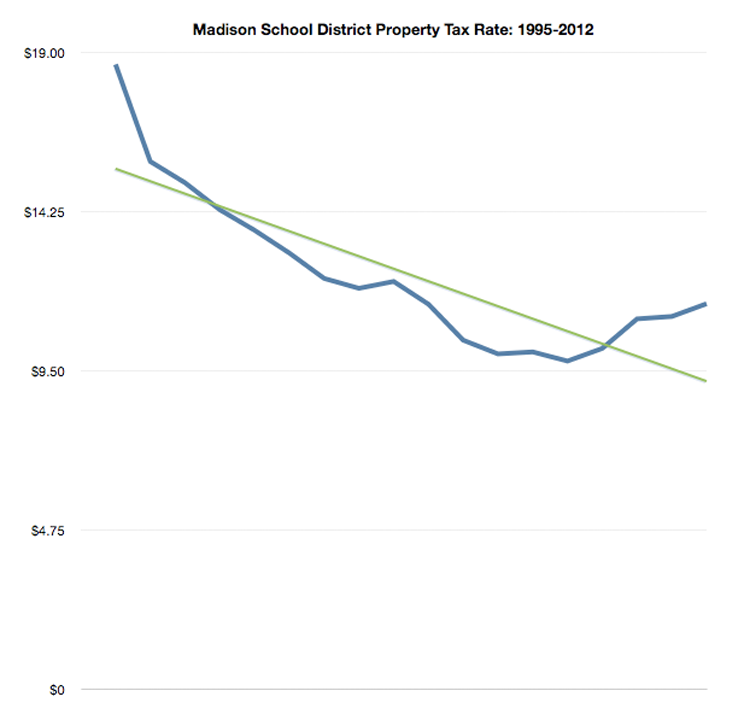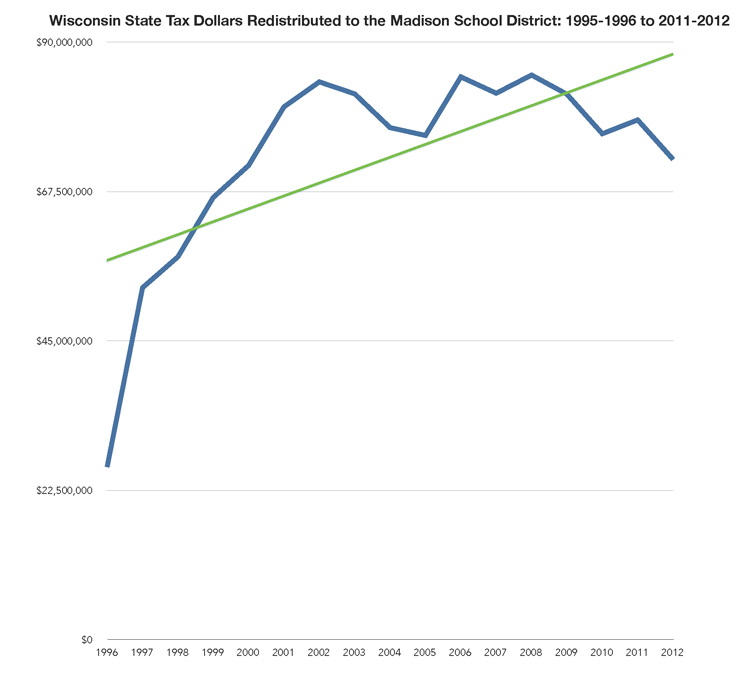Search Results for: Referendum property tax Middleton
Madison Schools 2016 Property Tax Increase Referendum – Let’s Compare: Madison and Middleton Property Taxes
The Madison School District is considering another property tax increase referendum for the upcoming November election. We’ve long spent more than most districts (“plenty of resources”), despite challenging academic outcomes. I thought it might be useful to revisit the choices homeowners and parents make. I’ve compared two properties, one in Middleton (2015 assessment: $257,500.00) and […]
K-12 Tax, Spending, Referendum and School Climate: Germany eyes a four-day week to help prevent mass layoffs
Charlotte Edmond: Germany’s largest trade union, IG Metall, is proposing its members call for a four-day week to offset economic pressures heightened by the pandemic. The proposal has had a mixed reception, with the German labour minister open to the possibility, while others are fundamentally opposed. The idea of a reduced working week has already […]
Group of Black leaders opposing $350M Madison schools referendums
Logan Wroge: An advocacy group of Black leaders is opposing the Madison School District’s $350 million ask of taxpayers this fall, arguing the proposals are under-developed and the district hasn’t done enough to support African American children to get their endorsement on the two November ballot referendums. In a statement sent to some media members […]
K-12 Tax, Referendum and spending climate: What Will Not Recover: Government
Jeffrey Tucker: What becomes of government credibility in the post-lockdown period? There are thousands of politicians in this country for whom this is a chilling question, even a taboo topic. The reputation of government was already at postwar lows before the lockdowns, with only 17% of the American public saying that they trusted government to […]
K-12 Tax, Spending & Referendum climate: Parents and closed schools
Chris Hubbach: After a spring of pandemic lockdowns and a summer of uncertainty as coronavirus infections surged, working parents with school-age children now face what could be a year of online schooling, presenting a buffet of bad options. Sacrifice earnings and career advancement to stay home. Hire a nanny, if you can afford it. Lean […]
K-12 Tax, Referendum and Spending Climate: Freed from the office, Madison telecommuters are snapping up rural homes
Steven Elbow: The coronavirus pandemic has a lot of people feeling boxed in. But for Michelle Possin it opened up a whole new realm of possibilities. Before the COVID-19 crisis, the 54-year-old recruiter for TASC, a Madison-based administrative services company, spent half her time at home and the other half in the office. But now […]
2020 Referendum: Commentary on adding another physical Madison School amidst flat/declining enrollment..
Scott Girard: Options at the new school under the recommendation would include designating it as a Community School — the district has four of those now — or creating specific programming like social-emotional learning, social justice or environmental education. Other ideas could still be added to that list as the planning process continues. Teachers have […]
K-12 Tax, Referendum and Spending Climate: Most Americans don’t have enough assets to withstand 3 months without income
Oregon State University: A new study from Oregon State University found that 77% of low- to moderate-income American households fall below the asset poverty threshold, meaning that if their income were cut off they would not have the financial assets to maintain at least poverty-level status for three months. The study compared asset poverty rates […]
K-12 Tax, Referendum & Spending Climate: Local governments want to defund the police, shut down the schools, and raise taxes.
Daniel Greenfield: The police aren’t policing and the teachers aren’t teaching. While many vital services aren’t functioning, the useless machinery of the bureaucracy grinds on with no one to pay for it. Locked down businesses don’t generate revenues and the unemployed aren’t a tax base. Tax revenues in New York City fell 46% in June. […]
K-12 Tax, Referendum & spending climate: California’s state budget has big benefits for a Teacher unions, stifles charter schools and funds phantom students
Mike Antonucci: Students of civics might think the California state budget is crafted by the elected representatives of the citizenry, who debate and amend proposals working their way through various committees, ultimately leading to a spending plan with majority support and the signature of the governor. All that happens, of course, but no budget makes […]
New taxpayer supported Madison K-12 superintendent to prioritize students’ mental, emotional health
Scott Girard: The new Madison Metropolitan School District superintendent stressed the importance of community buy-in during his introductory press conferenceWednesday. Carlton Jenkins, hired in early July, began in the role Aug. 4. He said he will focus on improving reading abilities, improving student mental health and rebuilding trust during his first year on the job, stressing the […]
K-12 Tax, Referendum & Spending Climate: In Coronavirus Bill, Democrats Push Massive Tax Cut For The Rich
Elle Reynolds: As the White House and House and Senate leaders continue trying to decide how to distribute more deficit spending on items tagged “coronavirus,” Democrats have come under fire for pushing a $137 billion tax break for the wealthy. The proposal, which was also part of a 1,800-page bill the Democrat-led House passed in […]
Madison’s Taxpayer Supported K-12 Schools’ fall plan includes Sept. 8 virtual start, MSCR child care for up to 1,000 kids
Scott Girard: District administrators outlined the latest updates to the “Instructional Continuity Plan” Monday night for the School Board’s Instruction Work Group. Board members expressed appreciation to staff for their efforts and asked questions about engaging students and ensuring they get some social experiences despite the restrictions of the virtual environment. The district announced July 17 it […]
K-12 Tax, Referendum & Spending Climate: U.S. Gets a Debt Warning From Fitch as Stimulus Battle Rages
Benjamin Purvis: One of the world’s major credit-rating companies fired a warning shot regarding the U.S.’s worsening public finances on Friday, just as lawmakers in Washington contemplate spending more to combat the economic fallout from the coronavirus pandemic. Fitch Ratings revised its outlook on the country’s credit score to negative from stable, citing a “deterioration […]
Commentary on The taxpayer supported Madison School District’s online Teacher Effectiveness
Emily Shetler: Almost immediately after the Madison School District joined other districts across the country in announcing a return to online instruction instead of bringing students back to the classroom for the fall semester, posts started popping up on Facebook groups, Craigslist, Reddit and the University of Wisconsin-Madison student job board seeking in-home academic help. Parents […]
Madison School District to use some federal COVID-19 relief funds for online math instruction (Fall 2020 Referendum tax & Spending increase plans continue)
Logan Wroge: The Madison School District will spend close to $500,000 out of the $8.2 million the district estimates it will receive from the federal Coronavirus Aid, Relief, and Economic Security (CARES) Act to shore up its mathematics instruction for elementary and middle school students. Using CARES Act money, the district plans to: • Purchase […]
Madison’s taxpayer supported K-12 schools may receive an additional $3.9M in redistributed federal tax dollars amidst fall 2020 referendum plans
Logan Wroge: The Madison School District is eligible for up to $3.9 million. It’s the only district in Dane County that is eligible for money from this specific pot in the CARES Act. Costs continue to grow for local, state and federal taxpayers in the K-12 space, as well: Let’s compare: Middleton and Madison Property […]
Middleton-Cross Plains School District extends contract for police in schools
Emily Hamer: Breaking away from Madison’s recent decision to remove police officers from its schools, the Middleton-Cross Plains School Board on Monday voted to extend its contract for school resource officers. Citing the need for relationship building between officers and students and protection from school shootings, the board voted unanimously to re-approve the contract with […]
K-12 Tax, Referendum & Spending Climate: Flight to suburbs boosts U.S. homebuilding
Lucia Mutukani: “The numbers also verify that many people are leaving, or planning to leave, big cities as telecommuting becomes the norm for many businesses.” Housing starts increased 17.3% to a seasonally adjusted annual rate of 1.186 million units last month, the Commerce Department said. The percentage gain was the largest since October 2016. Data […]
K-12 Tax & Spending Climate: State lawmakers will ask New Yorkers for input regarding state’s population decrease
Sarah Darmanjian: “When enough people who can afford to leave New York State are gone, who will be left to pay for the infrastructure, health care, schools and other necessities?” said Sen. Tedisco. “This is a bi-partisan effort to shine the light on this problem that’s causing people to leave our Upstate communities and to […]
Madison 2020 Referendum Climate: Taxpayers decide some states aren’t worth it
Ben Eisen and Laura Kusisto: The average property tax bill in the U.S. in 2018 was about $3,500, according to Attom Data Solutions, a real-estate data firm. But many residents in New York, New Jersey, Connecticut and California had been deducting well over $10,000 a year. In Westchester County, N.Y., the average property-tax bill was […]
Madison increases property taxes by 7.2%, despite tolerating long term, disastrous reading results
Ron Vetterkind: The Policy Forum report found just eight of the state’s 421 school districts account for more than a third of the $224 million increase in levies this year. Five of those districts with the largest dollar increases in taxes are the Madison, Sun Prairie, Middleton-Cross Plains, DeForest and Verona school districts. Wisconsin policy […]
Let’s Compare: Middleton and Madison Property Taxes
Madison property taxes are 22% more than Middleton’s for a comparable home, based on this comparison of 2017 sales. xlsx file. Related links: Madison’s taxpayer supported K-12 tax and spending history. Madison spends around 18.5 to 20K per student, depending on the district documents reviewed (some include all referendum spending). Middleton taxpayers spent $90,989,198 for […]
Commentary (seems to lack data…) on Madison’s K-12 Tax & Spending Increase Referendum
It is unfortunate two recent articles on the upcoming Madison School District tax & spending increase referendum lack data, such as: Total Spending for the current budget ($449,482,373.22 more) – about $18,000/student. Chicago spends about $14,336/student, Boston $20,707 and Long Beach $12,671/student. Historic Spending Changes (spending increases every year) Academic Outcomes vs. Spending Comparison with […]
K – 12 tax and spending climate: ongoing property tax increases and the “lost middle class”
Jim Tankersley: One day in 1967, Bob Thompson sprayed foam on a hunk of metal in a cavernous factory south of Los Angeles. And then another day, not too long after, he sat at a long wood bar with a black-and-white television hanging over it, and he watched that hunk of metal land a man […]
Property Tax Increase Climate: Madison’s Proposed 2015 Spending Referendum
A variety of notes and links on the planned 2015 Madison School District Property Tax Increase referendum: Madison Schools’ PDF Slides on the proposed projects. Ironically, Madison has long supported a wide variation in low income distribution across its schools. This further expenditure sustains the substantial variation, from Hamilton’s 18% low income population to Black […]
K-12 Tax & Spending Climate: Madison/Dane County Property Taxes Highest in Wisconsin, 61st in USA
Nick Heynen: Using data from the Census Bureau’s American Community Survey, the report’s authors examined residential property taxes in every U.S. county from 2007 to 2011, looking at how much homeowners were paying on average and how that average compared to average home sale prices over the same time period. The data contained some interesting, […]
Trial Balloon on Raising Madison’s Property Taxes via another School Referendum? Homeowners compare communities…..
Molly Beck There’s been little movement since mid-March when Madison School District Superintendent Jennifer Cheatham proposed asking voters in November for $39.5 million in borrowing to upgrade facilities and address crowding. The proposed referendum’s annual impact on property taxes on a $200,000 Madison home could range from $32 to $44, according to the district. After […]
Madison’s Property Taxes Per Capita 2nd Highest in WI; 25% of 2014-2015 $402,464,374 Budget Spent on Benefits
Tap the chart to view a larger version. A few slides from the School District’s fourth 2014-2015 budget presentation to the Board: I am surprised to see Physician’s Plus missing from the healthcare choices, which include: GHC, Unity or Dean. The slides mention that the “Budget Proposal Covers the First 5% of Health Insurance Premium […]
Elementary Data: Madison’s Proposed $39,500,000 Maintenance & Expansion Referendum
Madison Schools’ March, 2014 Facility Plan (PDF):: Shorewood Elementary: In conjunction with building an elevator tower, add a four-classroom addition. The additional classrooms are a relatively easy gain based on the building design. Shorewood’s 2013-2014 Low Income Population: 33.8%; All Madison Elementary Schools: 52.1% 2012-2013 Basic & Minimal Reading Proficiency: 34.3% Madison School District: 62.5% […]
A Look at Property Taxes Around the World and Madison’s 16% increase since 2007; Median Household Income Down 7.6%; Middleton’s 16% less
Sources:
Department of Numbers.
City of Madison Assessor Reports
Related:
August, 2006 (Deja-vu): Property Taxes Outstrip Income.
Budget Cuts: We Won’t Be as Bold and Innovative as Oconomowoc, and That’s Okay.
Madison Schools’ 2013-2014 Budget Charts, Documents, Links, Background & Missing Numbers.
Madison’s long-term disastrous reading results.
The Hated Property Tax: Salience, Tax Rates, and Tax Revolts.
Levying the Land.
Revenue Potential and Implementation
Challenges (IMF PDF).
Tax Policy Reform and Economic Growth (OECD).
Stagnant School Governance; Tax & Spending Growth and the “NSA’s European Adventure”.
Analysis: Madison School District has resources to close achievement gap.
A Middleton home paid $4,648.16 in 2012 while a Madison home paid 16% more, or $5,408.38. Local efforts to significantly increase property taxes may grow the gap with Middleton..
School Finance: K-12 Tax & Spending Climate
School spending has always been a puzzle, both from a state and federal government perspective as well as local property taxpayers. In an effort to shed some light on the vagaries of K-12 finance, I’ve summarized below a number of local, state and federal articles and links. The 2007 Statistical Abstract offers a great deal […]
Fall 2020 Madison School District Referenda Notes & Links
Taxpayers have long supported the Madison School District’s far above average spending, while tolerating our long term, disastrous reading results. The district has placed substantial tax and spending increase referendums on the November, 2020 Presidential ballot. A presenter [org chart] further mentioned that Madison spends about $1 per square foot in annual budget maintenance while […]
Monopoly Power Lies Behind Worst Trends in U.S., Fed Study Says
Craig Torres: The concentration of market power in a handful of companies lies behind several disturbing trends in the U.S. economy, like the deepening of inequality and financial instability, two Federal Reserve Board economists say in a new paper. Isabel Cairo and Jae Sim identify a decline in competition, with large firms controlling more of […]
“The Shame of Progressive Cities, Madison edition”
Chris Stewart discusses our long term, disastrous reading results with Kaleem Caire. mp3 audio transcript 2011: A majority of the Madison School Board aborted the proposed Madison Preparatory IB Charter school. Kaleem Caire notes and links. Let’s compare: Middleton and Madison Property taxes Madison property taxes are 22% more than Middleton’s for a comparable home, […]
A summary of community feedback (website) on Madison’s recent Superintendent candidates
Scott Girard: Records released by the Madison Metropolitan School District show feedback from staff and community members included plenty of praise and criticism for the two finalists for the district’s superintendent position this summer. Both Carlton Jenkins and Carol Kelley received positive feedback from many who filled out the forms, which asked respondents to answer […]
“That is all tied up in the bargaining so there’s nothing I can say about it,” Robinson wrote in an email.
Dahlia Bazzaz: The district and the union have been discussing work expectations for this fall, sparring over the prospect of some instructors providing in-person services. This marks the third straight summer when bargaining talks have cast doubt over the first day of school. Robinson denied that the idea of a delayed start was being explored […]
Rather Than Reopen, It’s Time to Rethink Government Education
Cathy Ruse & Tony Perkins: There is no better time to make a change than right now, when public education is in chaos. What’s that popping sound? Could it be a million figurative lightbulbs clicking on above public-school parents’ heads? The vast majority of American families send their children to public schools. Only 11 percent […]
Madison School Board President’s Rhetoric on growing gun violence
Gloria Reyes: We must prepare and implement a plan of action to prevent violence and to stop this horrific rise in violence.” David Blaska: Our word of the day is ‘Chutzpah’ (Yiddish for “what nerve!”) This is the school board president who kicked cops out of Madison’s troubled high schools NEWS ALERT: Detectives from the […]
Wisconsin Homeschooling requests more than double last year
Scott Girard: More than twice as many Wisconsin families as a year ago have told the state they plan to homeschool for the 2020-21 school year. According to data from the state Department of Public Instruction, 1,661 families filed forms to homeschool between July 1 and Aug. 6, up from 727 during the same period […]
A chat with Jane Belmore
Scott Girard: Jane Belmore retired in 2005 after nearly three decades as a Madison teacher and principal. That wasn’t the end of her career with the Madison Metropolitan School District: She’s since been asked twice to lead when the district found itself between superintendents. Both turned out to be pivotal moments for the district. Cap […]
Texas Education Association online education Commentary
Brittney Martin: Though Lee struggled with her online classes last semester, Garcia plans to keep her home again this fall. Lee has asthma, as does her nineteen-year-old sister, who contracted COVID-19 in June and narrowly avoided having to be admitted to the hospital as she struggled to breathe. Garcia has once again requested a hot […]
Waunakee school board reverses decision on all-virtual start to school year
WKOW-TV: The Waunakee Community School District Board of Education voted to reverse its decision on an all-virtual start to the school year. During a meeting Monday night [video], members of the board talked about recent coronavirus numbers and learning options that would best fit the community. In a 4-3 vote, the board was in favor […]
School teachers from across the state protest for a virtual fall semester
Tamia Fowlkes: Protesters from four of Wisconsin’s largest cities gathered Monday in a National Day of Resistance caravan to demand that legislators and superintendents make the fall 2020 academic semester completely virtual. Educator unions, community organizations and advocates from Kenosha, Madison, Milwaukee and Racine traveled to the Capitol, the state Department of Public Instruction and […]
Many (Madison) area private schools offering in-person learning this fall
Scott Girard: As the 2020-21 school year approaches, private schools are taking advantage of smaller enrollments and fewer buildings to plan in-person learning while area public schools are focusing on virtual learning. And since the Madison Metropolitan School District announced July 17 it would start the year entirely virtually, some private schools are seeing an increase in […]
La La Land Congress Wants To Give Billions To Public Schools To Stay Closed
Joy Pullman: When schools shut down this spring, Congress sent them $31 billion — nearly half its annual schools outlay — for sanitation and online learning, even though students weren’t in schools to theoretically contaminate them and online learning barely happened for millions of children. The vast majority of this money has not even reached schools yet. Nevertheless, […]
Online classes are not worth cost of full tuition
Hope Mahood: University life is going to look very different this fall, and as faculty scramble to work social distancing into their “campus culture,” students will be left paying the price for a half-baked education. With exceptions for science labs, fine arts studios and a few small tutorials — Ontario’s university courses will run online […]
Nordic Study Suggests Open Schools Don’t Spread Virus Much
Kati Pohjanpalo and Hanna Hoikkala: Scientists behind a Nordic study have found that keeping primary schools open during the coronavirus pandemic may not have had much bearing on contagion rates. There was no measurable difference in the number of coronavirus cases among children in Sweden, where schools were left open, compared with neighboring Finland, where […]
Commentary on 2020 K-12 Governance and opening this fall
Wisconsin State Journal: Unfortunately, the Madison School District announced Friday it will offer online classes only this fall — despite six or seven weeks to go before the fall semester begins. By then, a lot could change with COVID-19, the disease caused by the novel coronavirus. Dane County recently and wisely implemented a mask requirementfor inside […]
Madison Schools’ 2014-2015 $402,464,374 Budget Document (April, 2014 version)
The Madison School District (3MB PDF): Five Priority Areas (just like the “Big 10”) but who is counting! – page 6: – Common Core – Behavior Education Plan – Recruitment and hiring – New educator induction – Educator Effectiveness – Student, parent and staff surveys – Technology plan 2014-2015 “budget package” 3MB PDF features some […]
Sloppy Wisconsin K-12 budget hits Madison, other schools hard
It’s not just Madison schools getting hit with a much bigger cut in state aid than expected.
Middleton-Cross Plains is in the same leaky boat. So are schools in Adams-Friendship, Green Lake, Markesan, Montello, Princeton, Westfield and Wisconsin Dells.
State lawmakers had said no school district in Wisconsin should experience a state aid cut of more than 10 percent, under the state budget just signed into law.
But more than 90 school districts, including all of those listed above, just learned they’re facing cuts greater than 15 percent. In addition, school districts including Lodi and Cambridge are facing cuts of more than 12 percent.
It’s a stunning blow to local schools.
In Madison, it means the worst-case scenario of a 10 percent cut of $6 million next school year just became a much bigger reduction of more than $9 million.
That’s likely to trigger higher local property taxes and cuts to instruction — despite last fall’s referendum that was supposed to steady Madison schools for three years.
2007/2008 Madison School District Budget Outlook: Half Empty or Half Full?
Susan Troller’s piece today on the larger than usual reduction in “revenue cap limited” increases (say that quickly) in the Madison School District’s $332M+ 2007/2008 budget is interesting, from my perspective, due to what is left unsaid: The District has been running a “structural deficit for years, revealed only recently after school board Vice President […]
